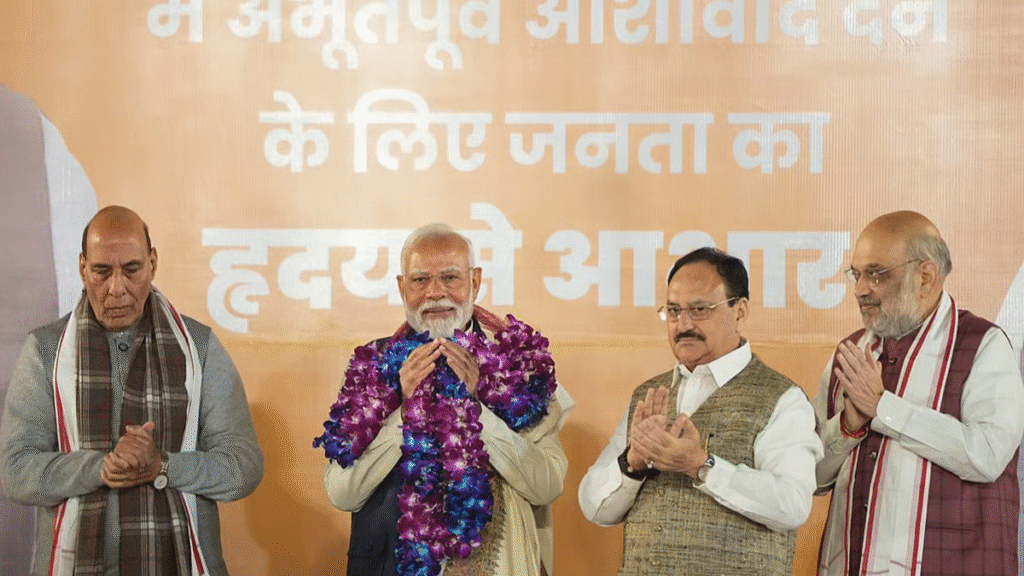Now Reading: RBI’s Rate Hold: A Strategic Move Amidst Trump’s Tariff Threats
-
01
RBI’s Rate Hold: A Strategic Move Amidst Trump’s Tariff Threats
RBI’s Rate Hold: A Strategic Move Amidst Trump’s Tariff Threats

The recent decision by the Reserve Bank of India‘s (RBI) Monetary Policy Committee (MPC) to hold its key lending rate steady at 5.5% has sent a clear signal to both domestic and international markets. While the move was widely anticipated by analysts, it takes on a particularly significant meaning in the context of renewed trade tensions with the United States, specifically the threat of new tariffs from the Donald Trump administration. This decision is a careful balancing act, demonstrating India’s commitment to internal economic stability while navigating a volatile global trade landscape.
A Wait-and-Watch Approach Amid Global Uncertainty
The RBI’s decision to not cut rates comes after a series of three consecutive rate cuts earlier in the year, totaling 100 basis points. With headline inflation at a six-year low and a favorable monsoon season boosting agricultural prospects, there were arguments for further easing. However, the MPC chose to maintain a “neutral stance,” indicating a cautious, data-dependent approach.
A primary reason for this caution is the evolving global economic situation, which is rife with uncertainty. The potential for a new wave of US tariffs on Indian goods, a threat voiced by the Trump administration, introduces a significant risk factor for India’s export-driven sectors. A sudden increase in tariffs, particularly the 25% duty on Indian imports announced by Trump, could make Indian products less competitive in the US market, impacting sectors like textiles, gems, jewelry, and leather. This could lead to a decline in export earnings, slower industrial growth, and potential job losses.

The Tariff Threat and Its Economic Implications
The Trump administration’s decision to impose a 25% tariff on Indian goods, with the possibility of this rate being raised “very substantially,” is a direct response to India’s continued purchase of Russian crude oil. While the new tariff, on top of an existing 25% rate, would bring the total duty to 50% for some products, certain key sectors like pharmaceuticals and electronics have been exempted.
However, the threat remains a major concern for Indian exporters. The Federation of Indian Export Organisations (FIEO) has warned that a 50% reciprocal tariff would place Indian exporters at a significant disadvantage compared to regional competitors. This could severely impact Indian exports to the US, which stood at a robust $86.5 billion in the previous fiscal year.
The RBI’s Calculated Stance
By holding rates, the RBI is essentially taking a strategic pause to assess the full impact of these geopolitical developments. The central bank’s governor, Sanjay Malhotra, acknowledged the difficulty in predicting the precise impact of the tariffs, stating that “it’s all very, very uncertain.” The decision to keep rates unchanged, therefore, is a way of creating a buffer against any potential economic shocks.
The RBI is signaling that while it has confidence in India’s domestic growth story—supported by strong rural demand, government spending, and a resilient services sector—it is not taking external risks lightly. The central bank is waiting to see how the trade negotiations unfold and what the actual impact of the tariffs will be on the ground before making any further moves on monetary policy. A rate cut at this juncture could have been interpreted as a response to external pressure, potentially sending a message of vulnerability.
Instead, the RBI’s “neutral stance” allows it to remain nimble and flexible. It can respond with further easing if the economic headwinds from the tariffs prove to be more severe than anticipated, or it can maintain the current policy if the impact is absorbed by the economy without major disruption. This approach is a testament to the RBI’s commitment to price stability and sustainable growth, prioritizing long-term economic health over short-term political pressures.
In conclusion, the RBI’s decision to hold interest rates steady is more than just a routine monetary policy action. It is a carefully calibrated response to a complex economic and geopolitical landscape. It demonstrates a measured confidence in India’s domestic fundamentals while acknowledging the significant external risks posed by global trade tensions. The central bank is not bowing to pressure but is instead maintaining a vigilant and strategic posture to safeguard the nation’s economic interests in a turbulent world.










